#Liebieghaus
Text

Mummy portrait (wax encaustic on sycamore wood) of a girl, from the Fayum region of Egypt. Artist unknown; ca. 120-150 CE (reign of Hadrian or Antoninus Pius). Now in the Liebieghaus, Frankfurt am Main, Germany. Photo credit: Carole Raddato.
#history#ancient history#Ancient Egypt#Roman Empire#Roman Egypt#art#art history#ancient art#Roman art#Egyptian art#Romano-Egyptian art#mummy portrait#encaustic painting#Liebieghaus
2K notes
·
View notes
Text
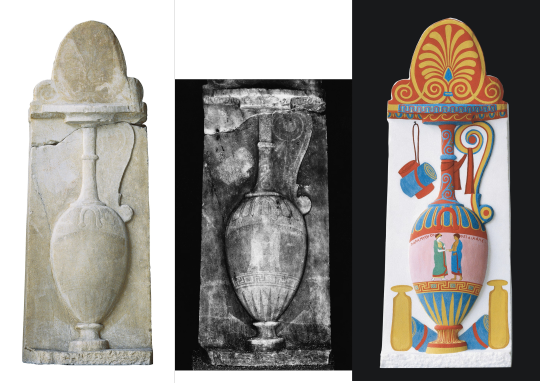
Funerary stele of Paramythion and Pheidiades, Athens (Greece), ca. 380/70 BC.
From left to right: 1) how it has been conserved nowadays, 2) the stele as seen in UV fluorescence, and 3) an experimental color reconstruction of how it would have looked like in antiquity.
Source: Gods in Colour: Polychromy in Antiquity online exhibit by Liebieghaus - Skulpturen Sammlung museum in Frankfurt (Germany).
308 notes
·
View notes
Text

Die Formen und die Farben des Alltags sind eine Richtschnur für das Leben. Ihre Bedeutung ist nicht starr, nicht fix. Der Blick auf die Dinge bleibt individuell. Die Funktion bleibt allgemein. Und die Wahrheit bleibt verborgen, denn im Kern möchte alles in Ruhe gelassen sein, als wäre das die Ordnung alles Seins, was einen Kreis schlösse, als wäre nicht die Offenheit Würze einer Lebenszeit...
.
.
The shapes and colors of everyday life are a guide for life. Their meaning is not rigid, not fixed. The view of things remains individual. The function remains general. And the truth remains hidden, because at its core everything wants to be left alone, as if it were the order of all being that closed a circle, as if openness wasn't the spice of a lifetime...
23 notes
·
View notes
Photo

Liebieg town in Liberec @nightcafestudio #jsilhavycz #jsilhavyk #aiart #aiartist #digitalartist #digitalart #liberec #liebieghaus #town @open_ai_ https://www.instagram.com/p/CjYU8Dqo-Vf/?igshid=NGJjMDIxMWI=
0 notes
Text
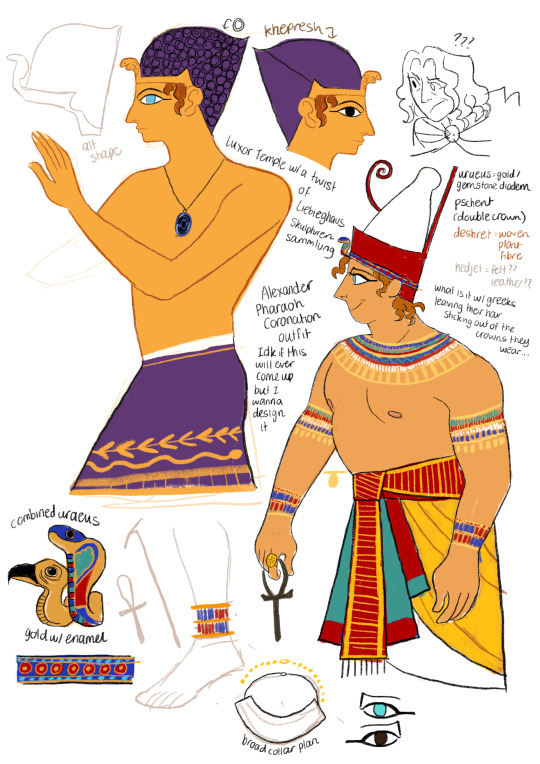
Thinking about the Ancient Egyptian portions of Alexander Comic Book 2. First, here's Alexander's ALKSINDRS face. This is from the relief of him on the Luxor Temple wall, with a twist from the pink granite statue of him (?) at Liebieghaus. Second, look at my man's drip!!! I am really happy with how I designed his coronation outfit - even if I have NO idea if I will ever feature it in the comic. He's looking so glam with all the beads and gold.

Who is this guy... I swear he has absolutely NOTHING to do with Alexander at all. No way.
218 notes
·
View notes
Text

Antico's Apollo Belvedere
This statue, dated 1505, is a work by Pier Jacopo Alari Bonacolsi, an Italian sculptor of the Renaissance era. It was one of the three bronzes he created after Apollo Belvedere, one of the commonly known statues of the Ancient Deity. One of the other bronzes (1497) is currently at the Liebieghaus museum in Frankfurt, Germany, whereas this statuette was recently donated to the Fitzwilliam museum in England.
Photo source: 🏺
#APOLLO 🌞#TESOROS 💍#I don't really like the conditions of it being donated :/#But at least it's at a museum now. The third one is... from 1490 I think?.#art#renaissance art#renaissance statue#apollo statue#apollo
177 notes
·
View notes
Photo




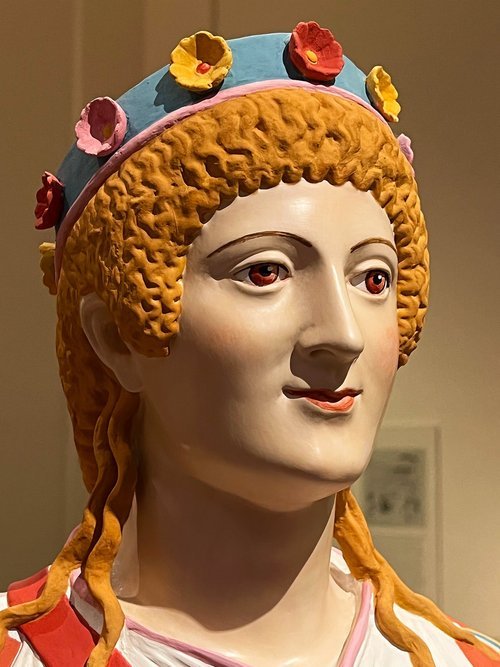


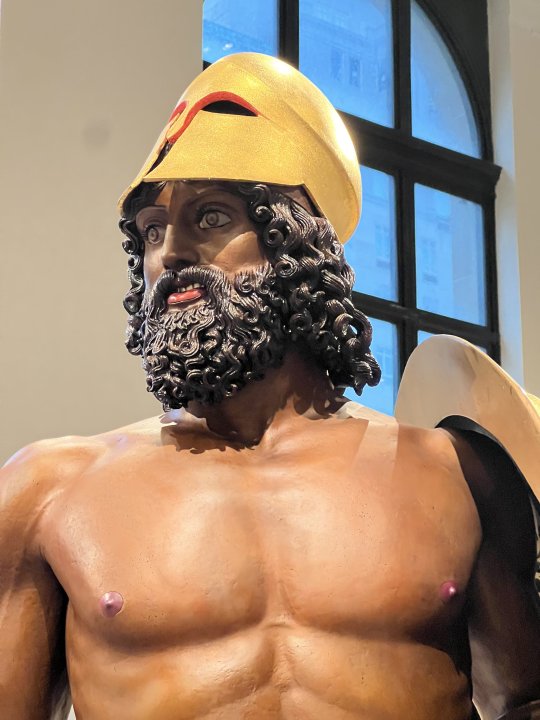

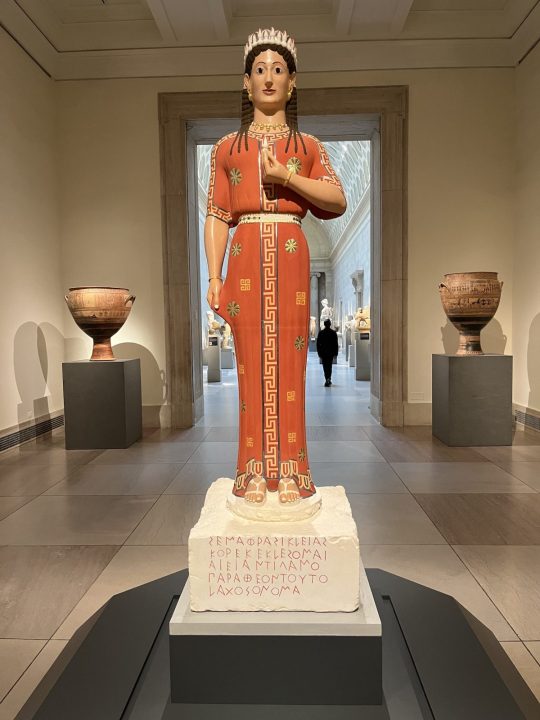
Chroma: Ancient Sculpture in Color
It is an exhibition that is now taking place at the Metropolitan Museum, in New York, and part of a work already known by professors Prof. Dr. V. Brinkmann, Head of the Department of Antiquity at the Liebieghaus Skulpturensammlung, and Dr. U. Koch-Brinkmann, who reminds us that the statues of the ancient Grecco-Roman world were not white, as we are used to seeing nowadays in museums, but vivid and full of colors, and sometimes adornments and clothing (kosmos) , and which had entirely another connotation besides art.
2K notes
·
View notes
Text


The Hunt of the Caledonian Boar - Marble sarcophagus relief known as the Meleager Sarcophagus, c. 250-270 CE
Liebieghaus Sculpture Museum, Frankfurt, Germany
131 notes
·
View notes
Photo

Vinzenz Brinkmann and Ulrike Koch-Brinkmann, reconstruction of the so-called Chios Kore from the Athenian Acropolis (2012),
Marble stucco on polymethyl methacrylate, natural pigments in egg tempera.
Courtesy Liebieghaus Skulpturensammlung (Liebieghaus Polychromy Research Project), Frankfurt am Main; original: Greece, Athens, marble, c. 520–500 BCE, Acropolis Museum, Athens.
The Met’s latest exhibition on Greek and Roman art brings color back to whitewashed ancient sculptures by analyzing “polychromy,” or the rhetorical uses of color. Employing 3D imaging techniques, curators developed new restorative methods to simulate how ancient works appeared in their time, placing reproductions alongside originals to exemplify the aging process.
The Metropolitan Museum of Art (metmuseum.org)
1000 Fifth Avenue, Upper East Side, Manhattan
Through March 26, 2023
#art#sculpture#colors#polychromy#reconstruction#chios kore#Athens#greece#history#style#themet#marble#stucco#restauration#vinzenz brinkmann#ulrike koch-brinkmann
52 notes
·
View notes
Link
5 notes
·
View notes
Text

In Deutschland bringen hohe Hygienestandards und innovative, ausgetüftelte Aufbewahrungskonzepte für alle möglichen und unmöglichen Produkte zur Alltagsbewältigung Menschen aus aller Welt und auch die einheimische Bevölkerung immer wieder zum Staunen und provozieren zuweilen spontane Aufrufe wie etwa 'Oh!'. (Symbolbild. Hier: Herrentoilette im Cafe im Liebieghaus, Frankfurt am Main)
3 notes
·
View notes
Text

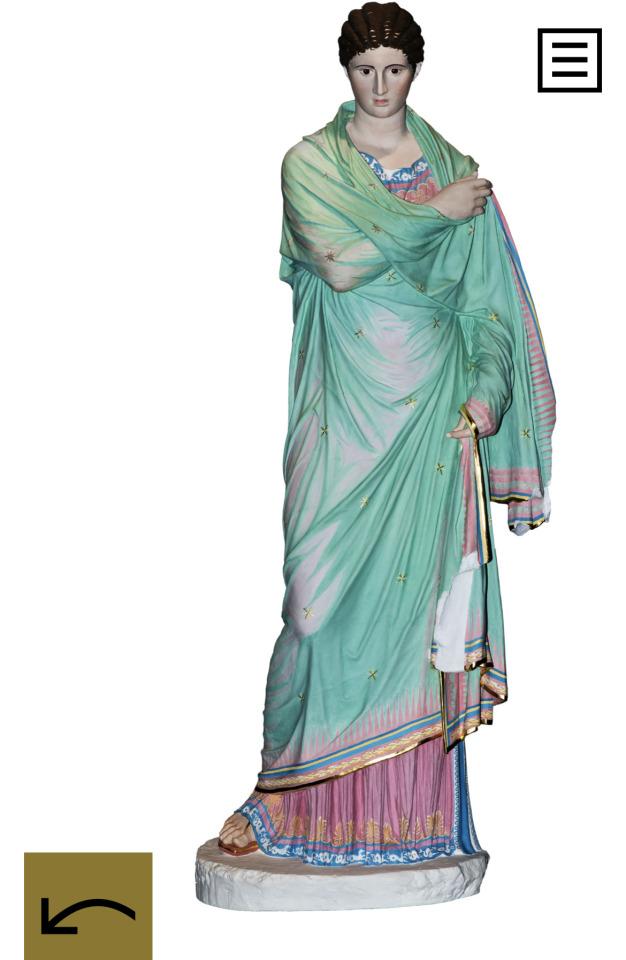

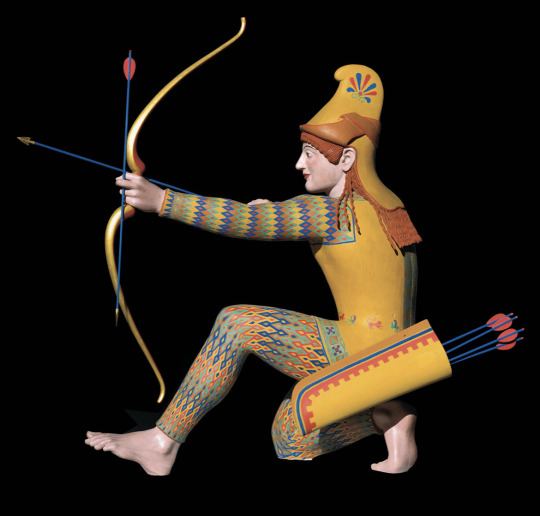

Obsessed with this archeological project to find the original colors of classical statues
https://buntegoetter.liebieghaus.de/en/
2 notes
·
View notes
Text
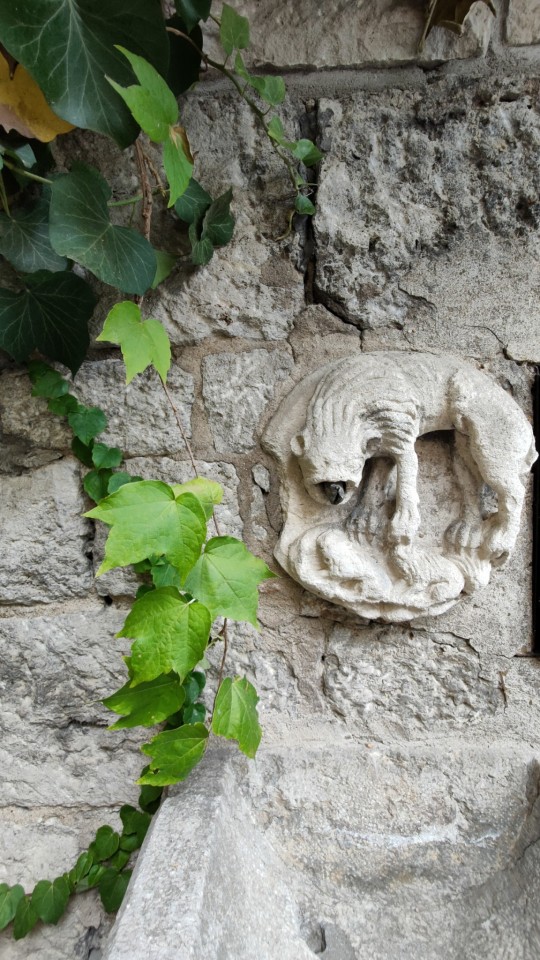
@caeliriva showed me Café im Liebighaus first. I'm forever grateful for that.
16 notes
·
View notes
Text
Art Theory and Criticism - Journal reflection 6
An exhibition created in 2003 titled Gods in Color, puts to light the previously hidden truth about Greek statues and their pigmented exterior which is made up of coloured dye. These recreations made for the exhibition are based on archaeological findings and are fully restored to their rather garish colours. This is done to break the historic illusion of white as the main colour for the Classical, Hellenistic, and later periods like Neo-Classicism’s sculptures. The breaking down of this stigma is acted upon by choosing their original colours, which were very bold if pictured freshly done that time, which make them look kitschy in today’s societal views. Which is why compared to the elegance associated with the classical Greek marble statue, puts forward new commentary that still originates from centuries ago. As Stated from Liebieghaus (2020):
Museum exhibitions of ancient Greek and Roman sculptures are striking for the dominance of pure white marble. But looks can be deceiving. These figures of gods and heroes were once richly clothed in vivid colors! We’ve known this for – so why does the image of whiteness still persist?

Figure 1: So-called Persian Rider, ca. 490 BC | Experimental color reconstruction of the so-called Persian Rider from the Athenian Acropolis, 2007/2019, Gods in Color – Golden Edition (liebieghaus.de)
The reconstructions of these works are pieced together using the ruins found, exposing the “former polychromy of the sculptures” (Liebieghaus, 2020). It is also important to note the change in visualisation and interpretation of the garments as compared to the blank sheets of clothes drowning in white, “Rich colors, detailed ornamentation, and countless gold dots once adorned this sculpture.” (Liebieghaus, 2020).

Figure 2: Detail of the hem of the vest of the so-called Persian Rider, showing the leaf-and-tongue pattern and a meander design, Gods in Color – Golden Edition (liebieghaus.de)
Excavations of these works only have the slightest scratches of pigment that can be seen with the naked eye. But this is enough for the artist and researcher to continue further from such a week and faint starting point. The patterns helped preserve whatever little colour was left after the Sculpture’s fate in the test of time and high chance on ruin, whether inflicted by man or nature. The unusual designs and colours make for a fresh view of these works and their time, that is when it comes to the mood and emotions, or even the narrative. However, what was lost to the naked eye can be discovered using the ever evolving technology of ultraviolet light, opening a whole new world of rediscovery and study of this already fascinating and highly researched era.

Figure 3: Archer from the west pediment of the Temple of Aphaia, ca. 480 BC | Experimental color reconstruction of an archer, the so-called Paris, in the costume of the horsemen of the neighbouring peoples to the north and east, from the west pediment of the Temple of Aphaia, Variant A, 1989–2003, Gods in Color – Golden Edition (liebieghaus.de)

Figure 4: UV-fluorescence photograph showing pattern on the leggings of the archer from the west pediment of Aphaia Temple, Gods in Color – Golden Edition (liebieghaus.de)
Reference list:
Liebieghaus, 2020. Gods in Color – Golden Edition. [online] Gods in Color – Golden Edition. Available at: <https://buntegoetter.liebieghaus.de/en/> [Accessed 19 November 2023].
0 notes
Photo

Today @ the Liebieghaus Museum! #pompeii #mosaic #sculpture #relife #liebieghausbuntegötter #liebieghausskulpturensammlung #today #kunst #frankfurtammain https://www.instagram.com/p/CpnbsM1Nc6F/?igshid=NGJjMDIxMWI=
#pompeii#mosaic#sculpture#relife#liebieghausbuntegötter#liebieghausskulpturensammlung#today#kunst#frankfurtammain
0 notes
Text

Allegory of Damnation in Hell - Ivory, by Johann Christoph Ludwig Lücke, Dresden, 1736
The Reiner Winkler Collection, Liebieghaus Sculpture Museum, Frankfurt, Germany
34 notes
·
View notes